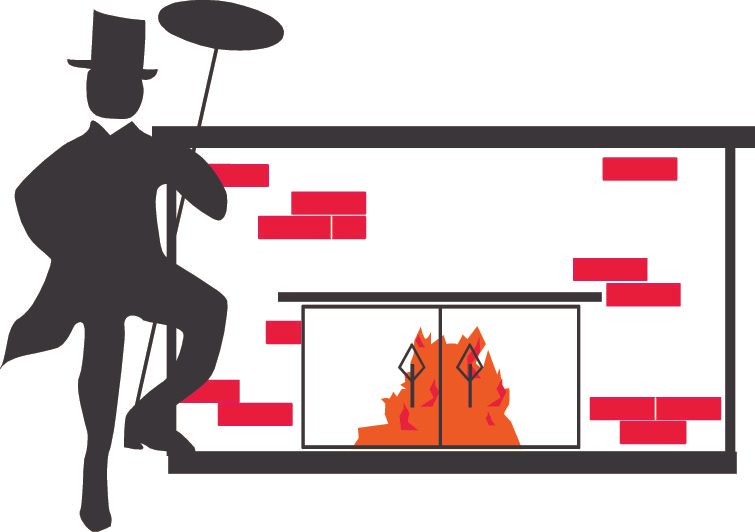When we go to a client’s home to sweep a fireplace, wood stove, or pellet system, we take great care in making sure that the home stays clean. The first thing we will do is spread out large canvas drop cloths to protect your flooring and any surrounding items from soot and dust. If we are sweeping a fireplace, we will also tape a canvas cloth to cover the opening. We will then look at your appliance to determine if it is in good working order. Some questions we may ask you are:
–Have you had any problems with the system?
–How old is your wood stove, wood stove insert, pellet stove?
–How much fuel have your burned since it was last swept?
Next, we will set up our vacuum (equipped with a Hepa filter). Whenever possible, we will go up onto the roof to sweep from the top down. Sometimes this is not possible because of the type of appliance, the chimney design or because of the weather, and we will sweep the flue from the bottom. Before we begin sweeping, we look up inside the flue to determine the size and type of chimney brush we should use.
In a masonry fireplace, we look at the type of build-up in the system to best determine the brushes and methods to use in order to get out the most amount of soot and/or creosote while maintaining the integrity of the system. Most soot (Class-1 creosote) can be removed with a soft bristle brush that we attach to rods. There are some occasions where an excessive amount of build-up requires a stiffer metal brush be used in order to sweep the flue.
Sweeping a prefabricated fireplace is different than sweeping a masonry fireplace. In a prefabricated fireplace, the sweeping must be done with a poly-type brush; otherwise, the manufacturers’ warranty becomes void and the system could be damaged.
For wood stoves, the type of liner often dictates what type of brush we can use. Clay flue tiles and heavy gauge stainless steel liners can be swept with either a soft bristle brush or a metal brush, depending on the build-up found in the system. Lighter gauge stainless steel liners can only be swept with the soft bristle brushes, otherwise, the liner could be damaged.
As we begin sweeping, we will have the vacuum running to collect any airborne particles. Unfortunately, the vacuum is really noisy! Once we have finished sweeping the system, we will use the vacuum to pick up any large pieces of debris that have fallen from the flue. If it is a fireplace, we will also sweep/vacuum the top of the smoke shelf. If it is a wood stove, we will take the black pipe outside of the house and clean the inside of the pipe, using a bucket to collect the debris.
We will then look up the flue again to make sure we removed the debris. We will also do a Level 1 visual inspection of the flue’s interior. Once we have completed our inspection, we will talk to you to let you about your system and answer any questions you may have.
